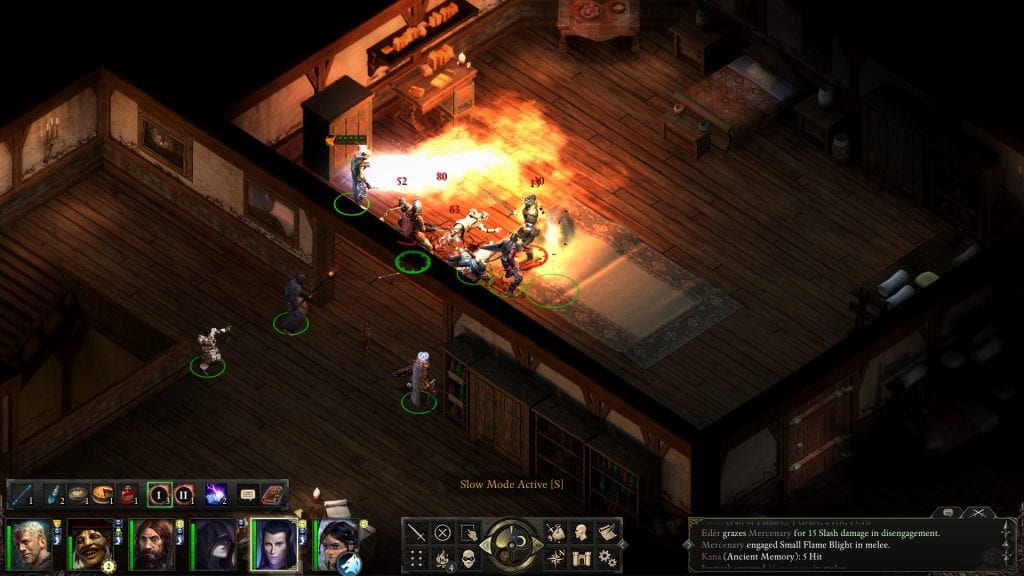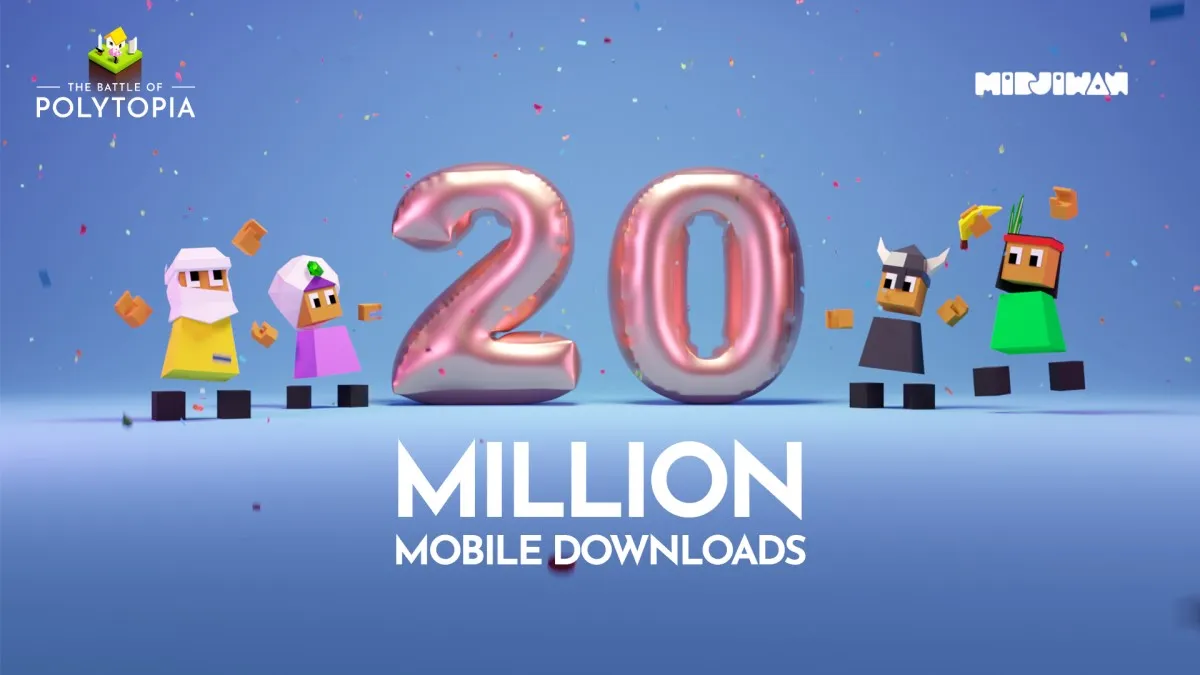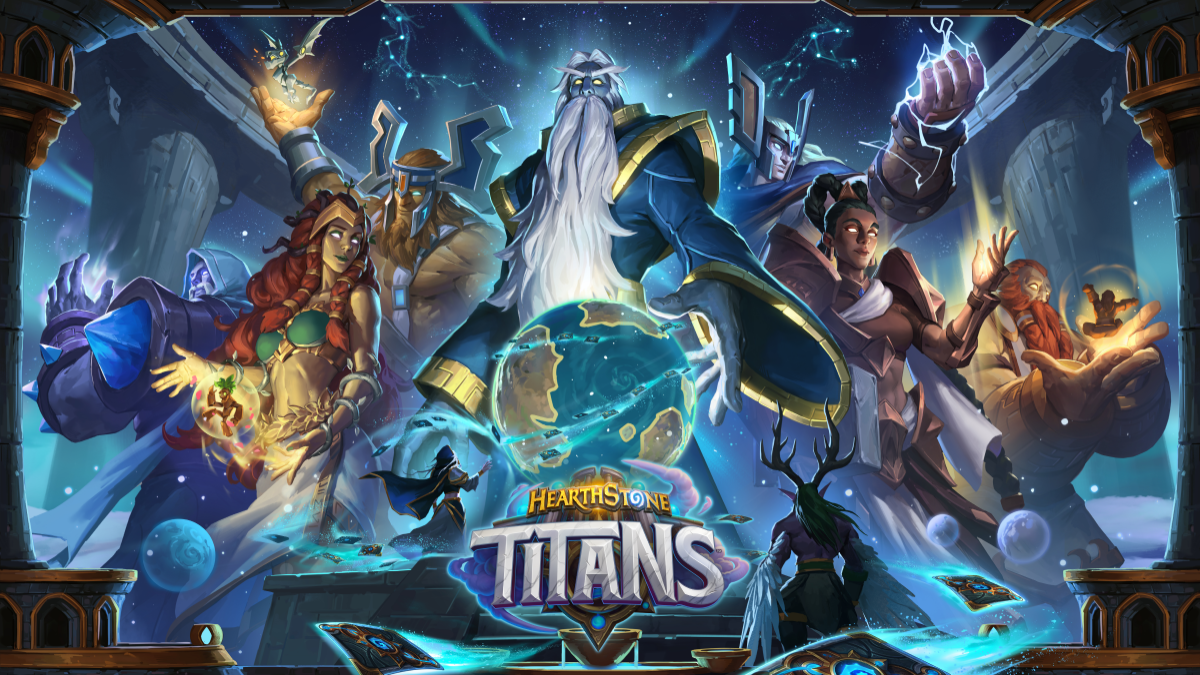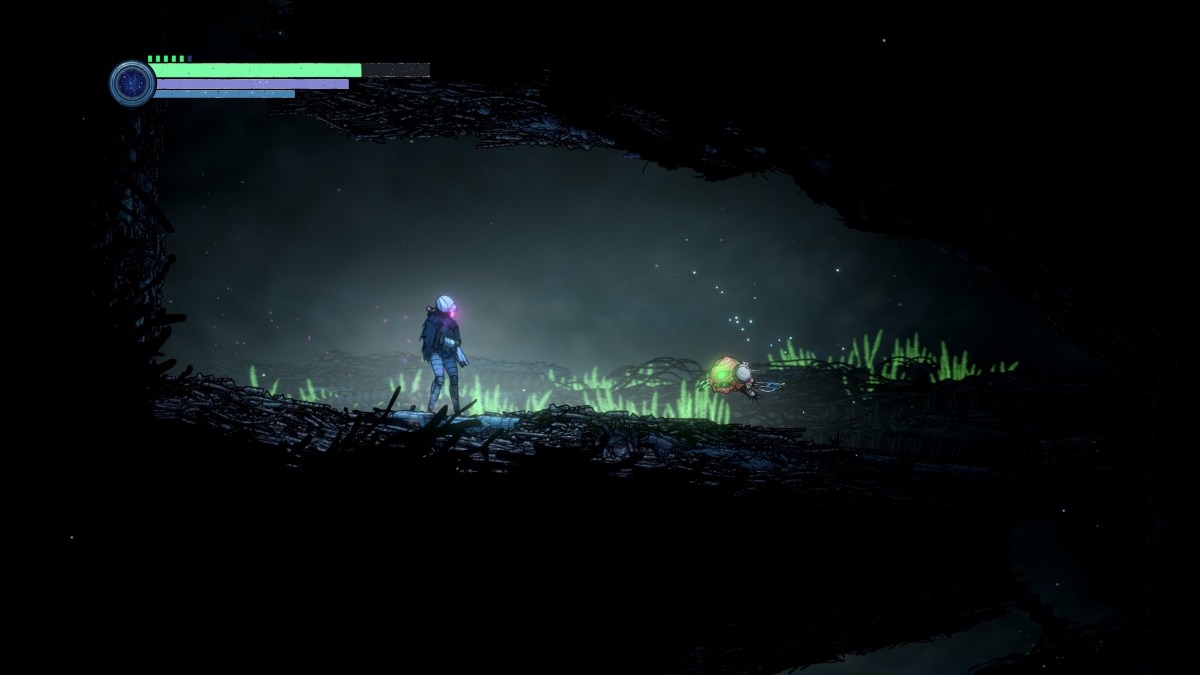Obsidian Entertainment’s kickstarted story-based isometric RPG, Pillars of Eternity, surely needs no introduction to an astute PC gaming audience, particularly now that the hype train has well and truly gone steaming off into the distance. As such, I’m not going to give it one. With mere hours to go until release and the dropping of every coverage embargo, we sat down with project lead Josh Sawyer to talk community Q&A, big bad publishers, design process and Obsidian’s reputation with buggy games.
You can listen to the full review or skip to text-based summary below.
PC Invasion: You’ve mentioned before that going through Kickstarter and not having a publisher has freed you up in developing this title. Could you talk about how that’s affected the game?
Josh Sawyer: Being able to talk to people right away and show them what we’re working on without going through the filter of a third party, like a publisher. Our audience is diverse enough – a lot of people are divided on certain features and aesthetics or whatever – that we have to do a lot of internal discussion on that. If we also had to deal with a publisher on top of that, that could be very frustrating.
Publishers… they often, especially marketing departments, have a very specific idea about how something should be. You kind of get in this three way tug of war between what the fans seem to be wanting, what you interpret is going to be best for that audience, and what the publisher thinks is going to be best in terms of release schedule and branding and all this other stuff. So without publishers it did allow us to focus a lot more on the back and forth between us and the audience; just getting feedback directly from them.
We also didn’t really have to worry about censoring ourselves in terms of themes or ideas or things we wanted to explore. We were our own regulatory committee. Like, ‘do we want to talk about this?’ or ‘does this seem appropriate?’ It was ours to decide, it didn’t have to go for approval to a third party.
With a publisher though…. sometimes they’re pretty hands off, but it’s always a gamble. A lot of them, because they are working a lot of projects at any one time, most publishers I would say, often personnel will switch off and sometimes those transitions are awkward and difficult because someone comes on and says, ‘What the hell’s all this! We’re not doing any of this stuff!’ ‘Dude… we just got done arguing about this. Please don’t bring all this up again….’
PCI: It bogs it down?
JS: Yeah.
PCI: You’ve talked recently about designing the character system to avoid so-called ‘trap builds’. Can you talk a bit about what they are and what you did?
JS: Yeah, it revolves around making strategic decisions for building your characters which can result in a severely underpowered character. Not just a 15% difference, but like, ‘whoa, this guy is totally screwed.’ Those are things which experienced RPGers usually spot a mile away. ‘I’m going to make sure I’ve got a 13 in this state because then I’m going to take this “feat” and that’ll raise it’ and so on.
Stuff like that where it requires either system mastery or prescience – knowing what things are coming up in the game – for a person to really do well. There are two problems with that… it makes it very difficult for us to balance the game. Because if we’re trying to balance the game for intelligent but ignorant, not in a bad way, people then it has to pretty easy but if we balance it for system masters then it’s going to be a lot lot harder.
To eliminate that problem we just try to raise the floor, so to speak. ‘Look… the worst you can make this character is still pretty decent.’ We don’t have stat requirements on the talents, most stats are pretty good on any class as long as you play to the strengths of that character.
I’ve played a lot of fairly complex RPGs with intelligent people… sometimes people will have a bad experience because they try to make this cool character idea they have but the system just doesn’t support it. They get frustrated because the game isn’t balanced for them.
PCI: Is there still room for players who want to mix/max?
JS: Oh yeah. You can min/max the hell out of some stats. You can increase the efficiency by a pretty big margin, and especially on the higher levels of difficulty that’s much more important. It’s mostly on normal and easy where it’s much more forgiving.
The thing is we could have tried to prevent mix/maxing, but that wasn’t the goal. It was more that we didn’t want that to create such a gulf between characters that the strongest and weakest possible were miles apart.
PCI: You mentioned the difficulty settings… it’s already been said that the hardest difficult settings are fiendishly difficult, to the point that no-one in testing has been able to beat them.
JS: We did have someone in QA who was able to do it with exploits, but we fixed him.
It is very hard. If players are used to games like Baldur’s Gate II and they’re fresh, like they’ve played them recently, then they can probably play on hard. If it’s been a while since they’ve played an Infinity Engine game, they should probably start on normal.
PCI: How was your experience with using your backers as testers?
JS: Because we had a backer beta, we had people giving their impressions and it wasn’t just what they thought from watching something it was actually something that they did. It’s like, ‘I played this and I did this, watch what I did.’ and we’d be like, ‘oh… that’s not good.’ or ‘I didn’t think of that combination’ or ‘…that someone would do it that way.’ That was a great amount of feedback.
Sometimes we’d talk to them on the forums, sometimes it’s best to let them talk amongst themselves. Even just watching conversations between different groups is very informative. There’re a lot of different opinions and foundational reasons for why people want certain things and just watching people bring those up and defend them to each other is worthwhile.
In QA things are usually very structured. The nice thing about fan QA is that they’re going to go and do whatever they want to do, which is unfocused but other times it’s something that we just wouldn’t have found because the structure of how we’re looking at things makes it difficult to see. I’d say it’s very cool that people can have the chance to do that.
PCI: Do you think there are pros and cons to having such open testing?
JS: I’d say it can be harsh for a lot of games that are in Early Access right now because gamers don’t realise just how screwed up games are! (laughs) Six – nine months before a game releases it’s really a mess in most cases.
On the one hand, that can be shocking for them and disheartening for us. But it’s also good because they can see how it all works and how things change over time. Hopefully fans will have some more insight into how we do things and how games develop overtime.
PCI: There’s so much going on with a project like this with writers and artists and so on. How do you go about organising all that creative input?
JS: Early on we had a lot of brainstorming, throwing ideas around in various meetings about things that we wanted to explore both in the setting and in this particular story because we were very conscious of the fact that we weren’t just writing a standalone story, we were also creating a new world that we wanted to continue to use in the future. So whatever story we told in this game was going to set a lot of ground rules for how this world worked.
That was actually a pretty lengthy process: the process of coming up with the plot and themes we were focusing on and things like that took quite a long time; at times it seemed painfully long (laughs).
With a new world and a new setting that’s ours to keep, everyone wants to put their own stamp on it. We tried to accommodate that as much as we could, but we needed to have something which felt like a coherent vision. Over the course of development it’s been a collaborative process.
PCI: Obviously some ideas don’t make the cut. How do you make those kinds of calls?
JS: Once we’ve narrowed the scope so we know what we’re talking about, we would start to ask questions when people had ideas for how to work things in. Like, ‘how do you feel this fits in?’ And if that didn’t pass the initial snip test, then we’d decide that’s not something which fits with what we’re doing right now.
Some of the designers early on had some ideas for this cool-sounding invasion plot, it was cool and elaborate and could go into all sorts of different directions. But it was like, ‘it seems like this is very tangential to everything else that’s going on in the setting.’ So they’re all like, ‘ahhhhh, yeah. I guess you’re right.’ We shelved that and we could revisit that in the future, because if this game’s successful we can come back and explore other stories.
PCI: You’ve mentioned that you want to enable modding as much as possible, but that it’s been difficult in some areas….
JS: The thing for us that’s difficult is getting new level art into the game. Not just the aesthetic, there’s lots of talented artists out there who can do that, it’s the process of actually rendering that out. It winds up being very complicated and has to go through all these different processes to actually get in the game. I think that’s the aspect that’ll be very difficult for people to do – how the assets are generated and put into the game.
I certainly don’t think it’s bad to support that stuff. I was the director on Fallout: New Vegas, and, like any game using that Bethesda tech base, it has a huge modding community. I certainly believe that the game benefits from having that modding community out there. It’s difficult to justify at times because supporting end user tools is a huge amount of work but if you can find a way to do it I think it yields very rewarding results in the end for everybody.
PCI: We’re seeing a lot of these kind of games coming out now, normally from crowd funding. Do you think this is a real renaissance and there’s more to come?
JS: I think we’ll see more of it. I guess the question would be, not if there’s an audience there, because there is. You’ve got Shadowrun, and Wastelands 2, Pillars is coming out, and Torment is coming out and so, yeah… dude, they’re there! There are people who want to play these games.
The question will be, I think, who’s going to fund it? Will it continue to be crowd funding? Is it Kickstarter or some other platform? Is it a mix? Maybe big publishers want to concentrate on other things. Are there smaller or mid-sized publishers who might be interested in games like this? That, I think, is the question for the future.
The thing that always galled us, really, was that back in the day is that distributors said, ‘nobody wants to play 2D games anymore.’ Errr… we were like, ‘why’s that?’ They were like, ‘no one’s buying them.’ and we were like, ‘Yeah, because you stopped making them. No one’s going to buy games that aren’t being made’ It was just a sort of self-fulfilling prophesy… 3D is here so we’re not going to make 2D games anymore.
That was always a frustrating thing. Because you’d be like, ‘no, I think there are a lot of people who are totally fine… or actually prefer 2D games.’ So after all these years finding that, yeah, they were always there they just … were waiting.
PCI: Obsidian has always been a company with great vision, but sometimes games have been plagued by bugs on release. How confident are you that Pillars of Eternity is coming out solid?
JS: I came here to work on Neverwinter Nights 2. The early days of Obsidian were Knights of The Old Republic 2, Neverwinter Nights 2 and Alpha Protocol, and all three of those games had a lot of bugs. After Alpha Protocol we said that as much as possible we needed to fix that problem.
So with Dungeon Siege 3, that came out and it was, I don’t want to say completely bug free, but that was a really really solid launch. South Park also did really well coming out.
With Pillars, because it’s our game and we were doing some of the QA, we knew we had to take control of it and make sure it’s really solid. That’s one of the reasons why it was delayed.
With any RPG of this size there’s so many things you can do that I’m sure people are going to find something that we didn’t find when it comes out. Basically, we’re ready so that when people find things, we’re going to turn around and fix them as soon as possible; come out with a patch as soon as possible; fix anything big. Then we’re going have another patch after that to fix the longer term things people are going to encounter. It’s important that people feel they can trust us and that the game is going to be good when it comes out, but we know that given that it’s and RPG being made from scratch, and an engine that we haven’t worked with before, there’s always going to be some weird stuff that… you know… a few hundred people who might have played the game is not the same as hundreds of thousands of people… But we’re ready!
JS: This has been a really great experience for us, we never thought we’d have the chance to make a game like this again. It’s really the dream of an independent developer to make their own IP and retain control of it, and it’s hard to negotiate deals like that. The fans that have allowed us to do this have done us a great service by helping us. So we hope that, not only that the game is good and they enjoy it, but that they enjoy the world and we can continue making more games in this setting in years to come.












Published: Mar 26, 2015 11:51 pm